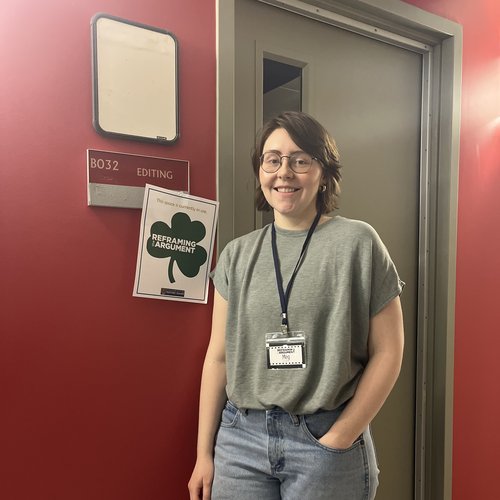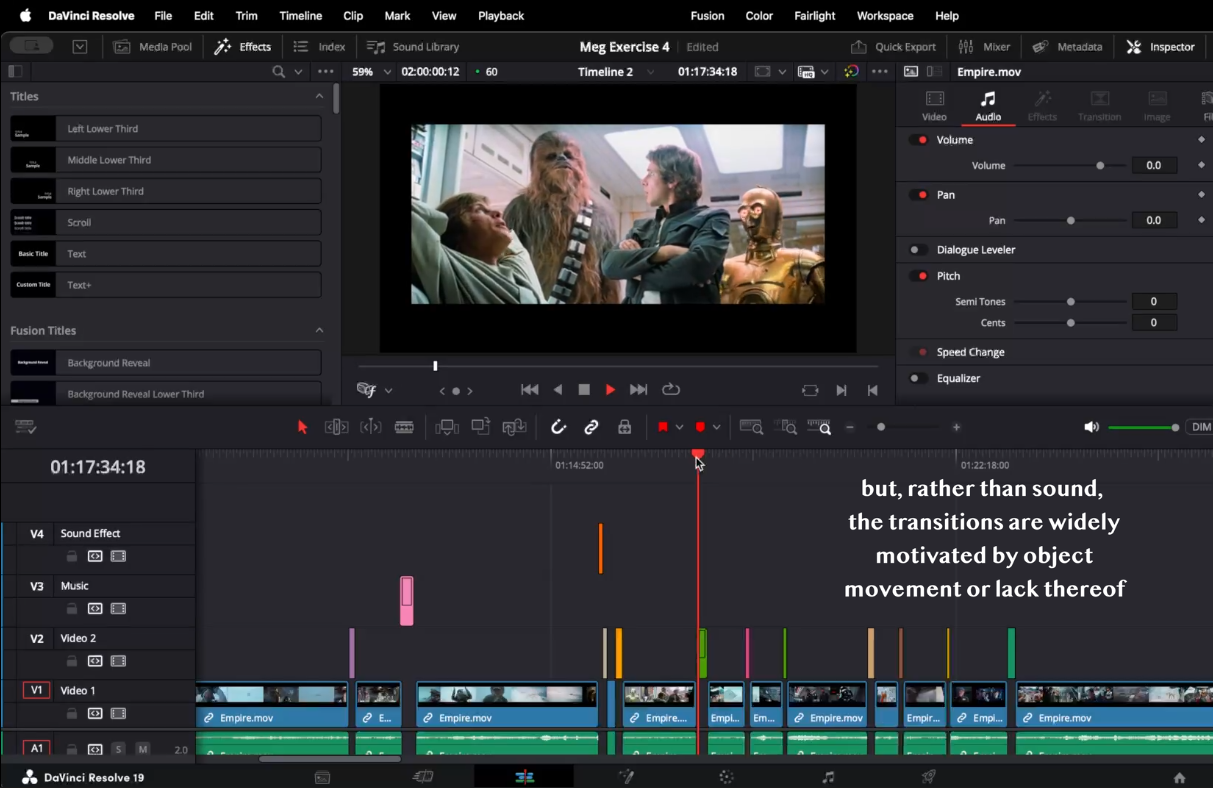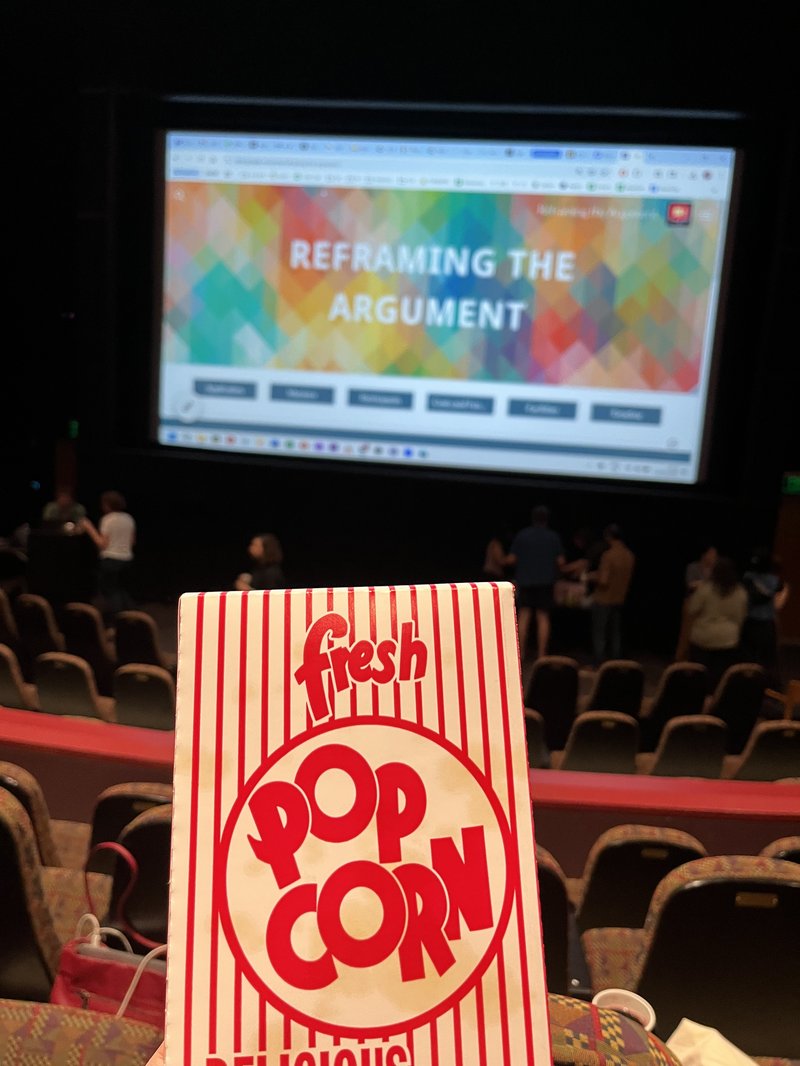Rethinking Research Through Visual Storytelling

The rise of digital platforms like YouTube has transformed how we engage with stories and film, making audiovisual critique more reachable and widely shared. These platforms host a vast array of popular videos where content creators analyze and reinterpret books, films and other media. This cultural shift toward audiovisual storytelling is also influencing academia, where scholars are increasingly turning to media-based methods of analysis.
The College of Arts and Sciences’ (A&S’) Department of English at Syracuse University is embracing innovative approaches to media engagement. One such method is called videographic criticism, a growing scholarly practice that uses sound and moving images (video) to explore and interpret works. Rather than relying solely on written analysis, videographic criticism allows scholars to work directly with the media itself by remixing scenes, layering audio and juxtaposing visuals to uncover new insights.
According to Will Scheibel, professor and chair of English, the accessibility of videographic criticism is part of its growing appeal.
Recent advancements in technology and distribution platforms like Vimeo and YouTube have made this kind of scholarship more visible and effective. It blurs the lines between academic and popular film criticism, between essay-filmmaking and film scholarship.
The Power of Sound and Image
One student engaging in this emerging field is Meg Healy, a Ph.D. candidate in English in A&S. She is using videographic criticism to complement her dissertation research on the cultural dominance of science fiction from 1950 to the present. Her project examines how fans, corporations, authors and scholars have shaped the popularity of the genre across literature and film.
“I started experimenting with videographic criticism this past spring,” Healy says. “I wanted to move beyond editing exercises and learn how to better convey arguments using sound and image.”
That curiosity led her to apply for and be selected to attend Reframing the Argument, an internationally competitive workshop held at the University of Notre Dame that brings together graduate students and mentors to explore videographic criticism as both a scholarly and creative practice. The fully funded residency held in June provided graduate students from across the country with training in advanced audiovisual rhetoric, video editing, constructing scholarly arguments, and applying videographic techniques to enrich and support their theses and dissertations.

Meg Healy standing outside an editing studio during the Reframing the Argument workshop at the University of Notre Dame.
“Coming from an English literature background, my instinct is to lean into text and clearly explain my choices and analysis in writing,” Healy says. “This workshop encouraged me to move away from more explanatory modes such as voiceover and text on screen to instead use images and sounds in ways that express my arguments.”
Detaching from traditional text and narration pushed Healy beyond her comfort zone, prompting a fresh examination of key areas in her dissertation. This shift resulted in a particularly enlightening discovery in the chapter focused on the Star Wars franchise. Although she had watched the series multiple times and possessed a deep understanding of its cultural and genre-defining impact, the hands-on videographic exercises at the Reframing the Argument workshop revealed elements she had previously overlooked.
“These aspects included thinking through specific editing techniques, such as the use of wipe transitions across the series, as well as considering where the franchise falls in a larger history of science fiction film when placed in conversation with ideologically and aesthetically contrasting films of the same genre,” she says.

A Community of Critics
An enlightening aspect of the workshop for Healy was its emphasis on collaboration. “Academic research can be solitary,” Healy says. “But this experience showed me how valuable it is to share ideas, get feedback and build community.”
Faculty mentors, including Colleen Laird (University of British Columbia), Ariel Avissar (Tel Aviv University), Barbara Zecchi (University of Massachusetts Amherst) and Matthew Thomas Payne (University of Notre Dame), played a key role in fostering that environment. “They created a space where experimentation was encouraged, and even so-called failures led to meaningful discoveries,” Healy adds.

The workshop wrapped up with a screening of a video essay showcasing the core argument of each scholar’s dissertation or thesis through the editing and storytelling techniques developed during the program.
Looking Ahead
As Healy continues her dissertation research, videographic criticism remains a central tool in her scholarly approach. She hopes to inspire others in the field to embrace this method and to keep building connections with fellow content creators and scholars.
According to Scheibel, the Department of English is poised to make major inroads in videographic criticism, with plans underway for a dedicated class on the subject in the 2026-27 academic year. The department will also host a workshop this fall with Catherine Grant, an internationally recognized scholar and practitioner of videographic criticism, known for her pioneering work with audiovisual essays in film and moving image studies.
With a growing network of collaborators and a fresh approach to scholarship, A&S’ Department of English is helping redefine what academic research can look—and sound—like.
Published: July 11, 2025
Media Contact: asnews@syr.edu


